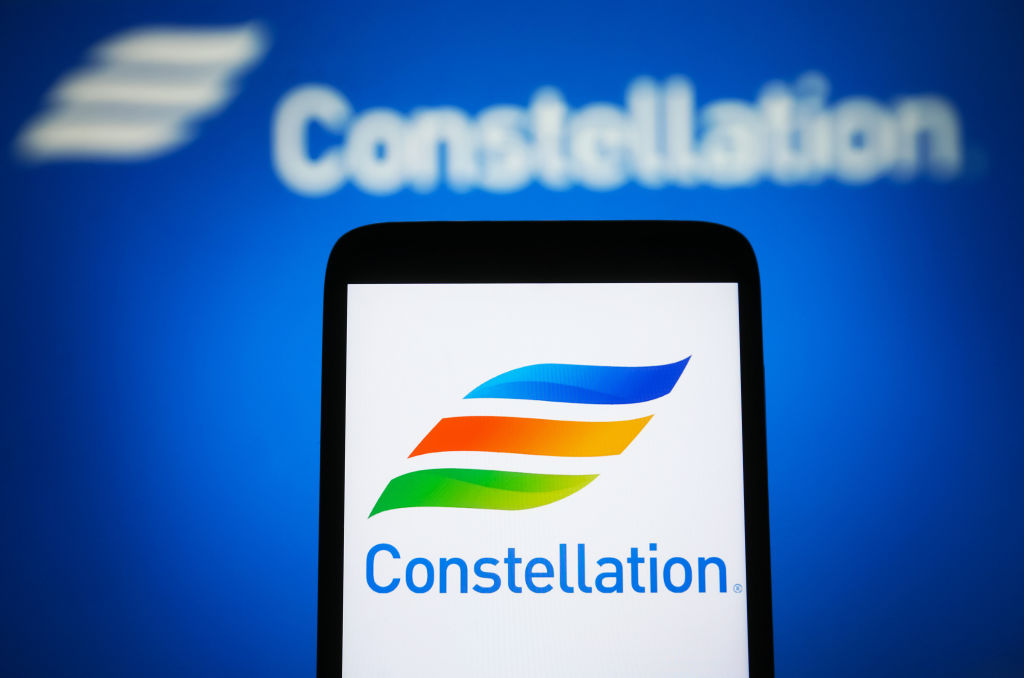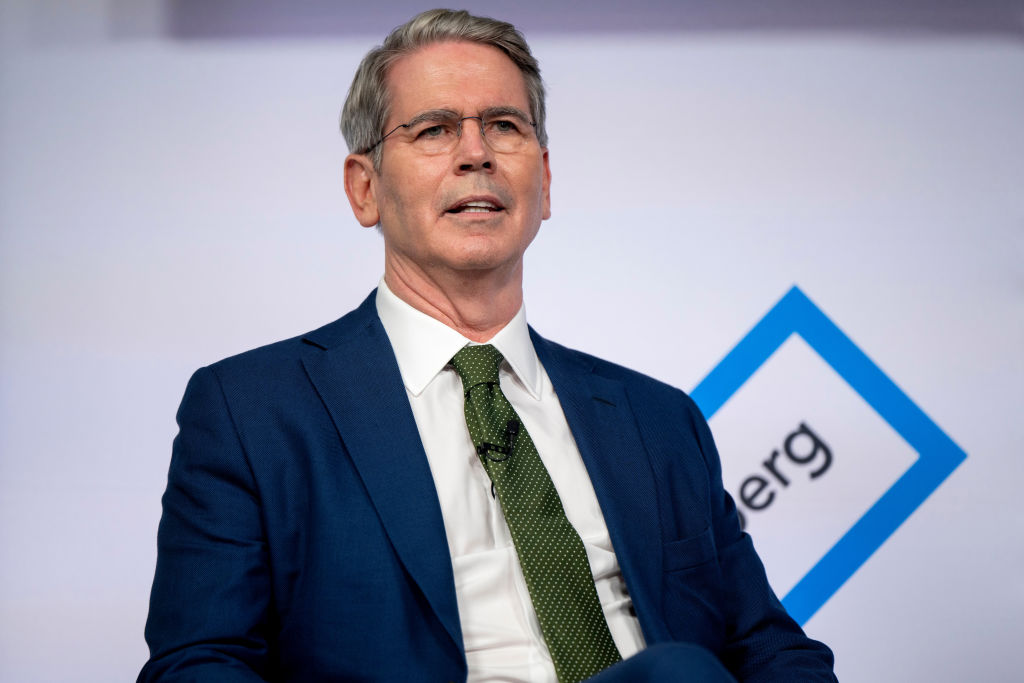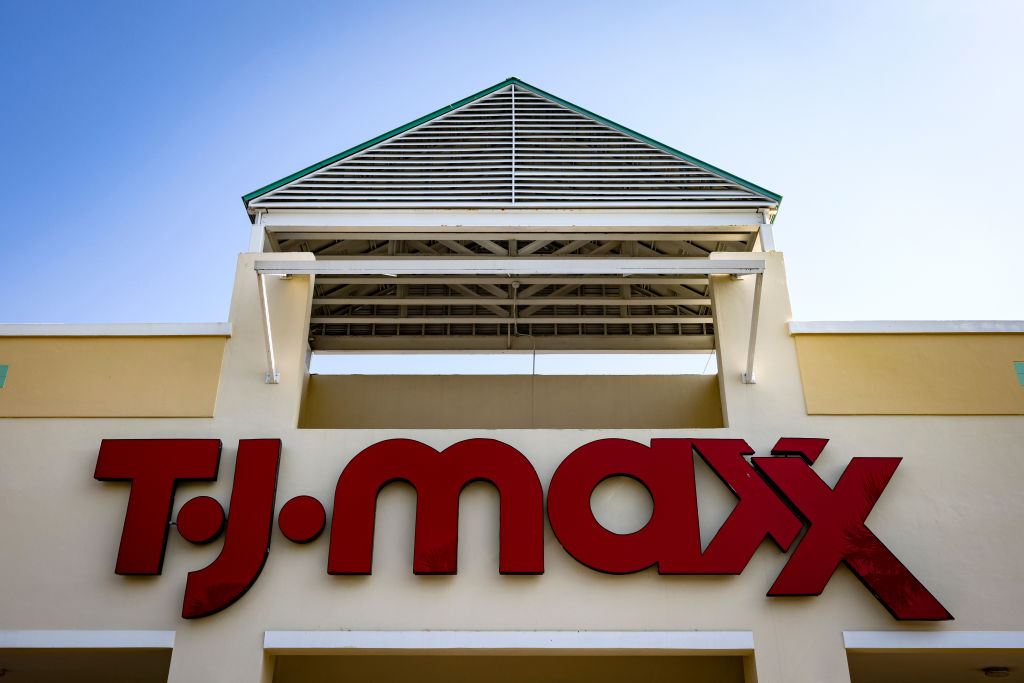7 Under-the-Radar Stocks
Find real deals among companies with little Wall Street following.
At the dawn of the 21st century, Wall Street stock research was about as reliable as an airline timetable. Brokerage analysis was riddled with conflicts of interest, and sell recommendations were a blue-moon event. But even if Wall Street, under pressure from government regulators, has cleaned up its act, following the advice of analysts may not be the best way to pick a stock. That's because stocks with broad analyst coverage sell pretty much for what they should sell for. "When you have highly skilled, trained MBAs following a stock, chances are you've arrived at an efficient price," says George Putnam, publisher of The Turnaround Letter.
You're far more likely to make a killing by taking the opposite tack: examining stocks that have little or no following on the Street. These stocks are often ignored by brokerages -- because the firms don't see potential investment-banking or commission revenues -- and trade at lower prices than they deserve to. The stocks stagnate not because of fundamental problems but because of lack of attention.
Tom Zemlicka, a broker at D.A. Davidson & Co., in Boise, Idaho, has made a fortune for himself and for clients over the past 40 years by investing in underfollowed stocks. "If you do really good homework on these businesses, you can make ten times your money if you're willing to hold for three to five years," he says. "It's kind of like looking for gold in a junkyard."

Sign up for Kiplinger’s Free E-Newsletters
Profit and prosper with the best of expert advice on investing, taxes, retirement, personal finance and more - straight to your e-mail.
Profit and prosper with the best of expert advice - straight to your e-mail.
Zemlicka suggests devoting 10% of your stock money to the shares of entrepreneurial but little-covered companies. One of his pals, Bill Dunk of Chapel Hill, N.C., says he's gotten by far the biggest bang for his buck by investing in such underfollowed shares over the decades. Sometimes these stocks tread water for years, then suddenly soar with the arrival of a catalyst, such as their inclusion in a market index or the initiation of Wall Street coverage. "I'm fairly certain the investments will work out," says Dunk, a consultant to chief executive officers. "I just don't know when. Time is the risk factor."
We've identified seven attractive stocks with little or no following on Wall Street (none is covered by more than two analysts). Note that these stocks are volatile and are best suited for risk-tolerant investors.
Toxic newspapers
Putnam, whose monthly newsletter has an outstanding stock-picking record, dines on companies in distress. "While others look for upbeat headlines, we look for bad news," he says. A lawyer by training, Putnam analyzes beaten-up, inefficiently priced companies that have fallen out of favor. "Wall Street avoids stocks with perceived risk," he says. "Analysts are mostly interested in saving their jobs."
One of his top picks is Sun-Times Media Group (SVN), formerly Hollinger International, publisher of the Chicago Sun-Times and dozens of community newspapers in Illinois. Investors are treating Sun-Times like toxic waste because its controlling shareholder is still Hollinger Inc., the former kingdom of Conrad Black, who is on trial for looting Hollinger International. "Everybody has kind of lost hope and bailed out of Sun-Times over the past three years," says Putnam. In mid June, the stock traded at about $5.50, or 73% off its record high, set in 2004.
Putnam doesn't know exactly what the catalyst will be for a Sun-Times turnaround or when the catalyst will emerge, but he has a good hunch: He thinks the company will be sold within a few years, either whole or carved up into pieces. Local papers in particular are still valuable assets because they are the best vehicles for neighborhood advertisers, such as restaurants and independent stores, to reach customers. Private-equity money is flowing into local-newspaper chains. When Putnam analyzes the company the way private-equity funds assess their potential targets (one favorite method is to compare a company's market value plus net debt outstanding to revenues), he concludes that Sun-Times is much cheaper, on a value basis, than most other publicly traded newspaper publishers, such as Journal Register Co.
Specialty paper
Sam Dedio favors companies operating in mature industries that are on the cusp of experiencing a rebound in profit margins. Dedio, who manages four U.S. stock funds for Julius Baer, says he likes these turnarounds because even if sales growth is modest, improving operating leverage will generate more profits and likely lead to a higher price-earnings ratio for the stock.
Dedio thinks he's found one such turnaround candidate in Schweitzer-Mauduit International (SWM). The Alpharetta, Ga., company is the world's largest supplier of fine papers to the tobacco industry (clients include Altria's Philip Morris) and also makes specialized papers for products such as drinking straws and vacuum-cleaner bags. Schweitzer-Mauduit is cutting capacity in high-cost locations, such as France, and expanding production in low-cost developing countries with expanding cigarette markets, including Brazil, China, Indonesia and the Philippines.
But what Dedio likes best about the company is its newfound ability to raise prices in places where state and national governments are requiring tobacco companies to use paper with low-ignition properties to reduce the fire hazard of smoldering cigarettes. "Schweitzer can charge a premium for its paper," Dedio says. "It's a simple story, and no one is following it." He projects that the company's operating profit margin, which collapsed from 11% in 2002 to 1% in 2006, will recover to 6%.
Health-care niche
One of the intriguing aspects of finding attractive, under-covered health-care stocks is that so many companies are acquired at plump premiums by the likes of Johnson & Johnson and Abbott Laboratories. That's because the behemoths find it easier to buy entrepreneurial businesses than to develop them in-house. Yes, these stocks can ride a roller coaster, but patience is often rewarded. "If you believe in the company and its management, volatility provides an opportunity to buy more stock from short-term thinkers," says Sabrina Carollo, health-care analyst for the Ariel funds.
One low-profile enterprise Carollo likes is Bio-Rad Laboratories (BIO). The Hercules, Cal., life-sciences company is off analysts' radar screens, despite solid profits, a market value of $2 billion and revenues of $1.3 billion (65% from overseas). Bio-Rad sells products used to identify substances in blood and other bodily fluids, and produces tools and specialty chemicals used in the development of new drugs.
Carollo likes Bio-Rad's approach of selling directly to scientists and other researchers, which she believes enhances the effectiveness of research and promotes customer retention. Ariel is Bio-Rad's biggest shareholder, with a stake of nearly 9% through various Ariel funds.
A big-bucks play
Steve Rogé, manager of Rogé Partners fund, says that one of his favorite strategies is to purchase stocks selling at high prices with little or no Wall Street following. Basically, a company that refuses to split its shares as the price escalates to three or four digits is a company that focuses on building its business instead of playing in Wall Street's sandbox. Retail investors tend to avoid stocks trading at lofty prices per share, such as Berkshire Hathaway, Leucadia and Wesco Financial Corp. And high prices mean lower trading volume in shares, which reduces brokerage revenues (brokers are compensated by commissions per share traded).
One attractive stock with a three-digit price tag is White Mountains Insurance Group (WTM). The Hanover, N.H., company is a favorite of such highly regarded value investors as the men and women who run Mutual Series, Third Avenue Value and Fairholme funds. Gabriel Solomon, a financial-services analyst at T. Rowe Price (also a big shareholder of White Mountains), says the company focuses on building long-term shareholder value and essentially ignores the quarterly earnings consistency so beloved by Wall Street. So although White Mountains has a superb long-term record of acquiring and integrating businesses, and boasts a market value of $6.4 billion, brokers ignore the stock, which traded at $586 in mid June.
And notwithstanding the high share price, the stock seems reasonably valued. It trades at just 1.4 times book value (assets minus liabilities), the gauge that many investors prefer when analyzing insurers.
Hearing helper
Barbara Walchli, manager of Aquila Rocky Mountain Equity, likes to trawl for companies with unique products or services in a niche business. "Lots of times, they're not priced correctly because there are no forward earnings estimates available," she says.
She thinks she's found a winner in Salt Lake City-based Sonic Innovations (SNCI), a leading designer and manufacturer of hearing aids and hearing-aid components. For one thing, the demographics in the U.S. and abroad (where Sonic generates 60% of its sales) are favorable. Plus, enhanced digital-signal processing has made devices smaller and less obtrusive.
Walchli says Salt Lake City is a center for excellence in sound and software technologies, and reckons that Sonic harnesses these skills to develop superior products. Walchli expects a new management team, expanded product distribution and new devices to lead to accelerated growth. Sonic, which had small losses in 2005 and 2006, reported a profit in the first three months of 2007 and record quarterly revenues of $29 million. The market hasn't been entirely deaf to Sonic's improving prospects: Sonic's shares have nearly doubled over the past year, to $10.
Smart-money pick
Fund manager Rogé freely admits to following the smart money with some of his investments. He likes to peruse the portfolios of crack value investors, such as Ian Cumming and Joseph Steinberg, the press-shy duo who run Leucadia National Corp. In combing Leucadia's stock holdings, Rogé stumbled on International Assets Holding Corp. (IAAC) and became even more intrigued when he noticed that Leucadia, the largest shareholder, was seeding a new emerging-markets hedge fund that International Assets was launching.
Rogé checked up on the diversified financial-services boutique, based in Altamonte Springs, Fla., and liked what he found. International Assets focuses on underserved cross-border niche services, such as making markets for foreign stocks, writing contracts for currency and commodities hedging, and warehousing metals, such as gold and platinum, that back commodity contracts. "It's in the sweet spot of the commodities boom," says Rogé, who holds shares of both International Assets and Leucadia in his fund. Globalization drives all these businesses, and Rogé thinks International Assets, which just reached $1 billion in assets under management, can double in size in two to three years.
A low-priced flier
If White Mountains represents one end of the price spectrum, PCS Edventures (PCSV.OB) represents the other. It is a high-risk penny stock (recent price: $1.34) that trades on the OTC Bulletin Board, which is home to many low-priced, thinly traded, easy-to-manipulate stocks (see "The Truth Behind Penny Stock Spam," June). It is also a favorite of Zemlicka, the Boise broker.
Founded by a public-school teacher, Edventures develops software, curricula and props for teaching science, math and engineering to kids in a fun, hands-on fashion. The content and assessment tools can be delivered over the Internet, which is one reason Edventures' overseas sales are surging.
Another, alas, is that foreign schools and students seem far more interested in learning about robotics, physics and mechanical engineering than do Americans. "Unfortunately, it's easier for us to sell engineering labs to a third-grade classroom in Pakistan, India or the Far East than in the U.S.," says Anthony Maher, Edventures' chief executive officer. "We're very far behind in engineering, math and science education in this country."
Sales in the fiscal year that ended March 2006 totaled only $3 million, but last March the company reported a $7.2-million deal to license its programs throughout Saudi Arabia. (Edventures was expected to report fiscal 2007 earnings in late June, but, Maher says, the revenues from the Saudi contract might not show up until the new fiscal year, depending on decisions by the company's auditors.) Maher thinks his company can sustain the kind of blistering growth suggested by the Saudi deal for at least five more years. Still, given the high-risk nature of this stock, it might be prudent to wait until the company issues a financial report that includes the revenues from the March contract and any other big deals.
Packaged deal: An ETF for stealthy stocks
Academics endorse the "neglected stock effect," the theory that shares that escape Wall Street's notice perform better than those that have been picked over by brokerages. So it was only a matter of a time before someone concocted an exchange-traded fund to track neglected stocks. That someone is Claymore Securities, a Chicago firm that seems to be specializing in offbeat funds (see Wild and Seriously Wacky ETFs, Feb.). Its Claymore/Sabrient Stealth ETF (STH), which launched September 21, 2006, tracks the Sabrient Stealth Index, constructed by Sabrient Systems, a Santa Barbara, Cal., securities research firm.
Scott Martindale, senior managing director of Sabrient, says that no more than two analysts can follow a company for its stock to be eligible for inclusion in the index. To pick the stocks, Sabrient uses computer models that favor growing companies trading at reasonable prices. Stocks with greater trading volume get a larger weighting than illiquid issues. Current holdings include Martha Stewart Living, Prepaid Legal Services, Eddie Bauer Holdings and Morningstar Inc. The index's turnover is a towering 50% each quarter, which means there may be significant taxable distributions. From the fund's inception to June 1, it returned 17%, compared with 16% for the small-company Russell 2000 index.
Key numbers: Seven stocks Wall Street ignores
Don't be overly fazed by the absence of price-earnings ratios for these five promising, underfollowed stocks. Profits may be small or nonexistent because the companies are young or experiencing temporary problems.
| FUND (SYMBOL) | RECENT PRICE | MKT. CAP (MILLIONS) | SALES (MILLIONS)* | EARNINGS PER SHARE* | PRICE-EARNINGS RATIO@ |
| Bio-Rad Laboratories (BIO) | $74 | $1,970 | $1,290 | $3.67 | 20 |
| International Assets Holding (IAAC) | 24 | 195 | 914 | 0.06 | - |
| PCS Edventures (PCSV.OB) | 1 | 42 | 2** | -0.10** | - |
| Schweitzer-Mauduit Intl (SWM) | 29 | 459 | 660 | -0.08 | - |
| Sonic Innovations (SNCI) | 10 | 255 | 110 | 0.03 | Row 5 - Cell 5 |
| Sun-Times Media Group (SVN) | 5 | 441 | 408 | -0.65 | - |
| White Mountains Insurance (WTM) | 586 | 6,350 | 4,670 | 61.97 | 9 |
Data to June 11. *Based on the 12 months through March 31. @Based on trailing earnings. **Through December 31. Source: Yahoo
Get Kiplinger Today newsletter — free
Profit and prosper with the best of Kiplinger's advice on investing, taxes, retirement, personal finance and much more. Delivered daily. Enter your email in the box and click Sign Me Up.
Andrew Tanzer is an editorial consultant and investment writer. After working as a journalist for 25 years at magazines that included Forbes and Kiplinger’s Personal Finance, he served as a senior research analyst and investment writer at a leading New York-based financial advisor. Andrew currently writes for several large hedge and mutual funds, private wealth advisors, and a major bank. He earned a BA in East Asian Studies from Wesleyan University, an MS in Journalism from the Columbia Graduate School of Journalism, and holds both CFA and CFP® designations.
-
 5 Easy Weatherproofing Projects That Help Prevent Damage and Save on Insurance
5 Easy Weatherproofing Projects That Help Prevent Damage and Save on InsuranceProtect your home from storms and water damage with these simple weatherproofing upgrades — some may help reduce your home insurance premium.
By Paige Cerulli
-
 If Trump Fires Jerome Powell, What Happens To Savings and Mortgage Rates?
If Trump Fires Jerome Powell, What Happens To Savings and Mortgage Rates?President Donald Trump expressed his desire to remove Fed Chair Jerome Powell. If the president is successful, how would it impact your savings accounts?
By Sean Jackson
-
 Fed Leaves Rates Unchanged: What the Experts Are Saying
Fed Leaves Rates Unchanged: What the Experts Are SayingFederal Reserve As widely expected, the Federal Open Market Committee took a 'wait-and-see' approach toward borrowing costs.
By Dan Burrows
-
 Why Wells Fargo's Revenue Miss Isn't Worrying Wall Street
Why Wells Fargo's Revenue Miss Isn't Worrying Wall StreetWells Fargo is one of the best S&P 500 stocks Wednesday even after the big bank's top-line miss. Here's what you need to know.
By Joey Solitro
-
 Constellation Energy Stock Soars on Its $26 Billion Buy. Here's Why Wall Street Likes the Deal
Constellation Energy Stock Soars on Its $26 Billion Buy. Here's Why Wall Street Likes the DealConstellation Energy is one of the best S&P 500 stocks Friday after the utility said it will buy Calpine in a cash-and-stock deal valued at $26 billion.
By Joey Solitro
-
 Fed Sees Fewer Rate Cuts in 2025: What the Experts Are Saying
Fed Sees Fewer Rate Cuts in 2025: What the Experts Are SayingFederal Reserve The Federal Reserve cut interest rates as expected, but the future path of borrowing costs became more opaque.
By Dan Burrows
-
 What Scott Bessent's Treasury Secretary Nomination Means for Investors
What Scott Bessent's Treasury Secretary Nomination Means for InvestorsMarkets are reacting positively to Trump's nomination of Scott Bessent for Treasury secretary. Here's why.
By Joey Solitro
-
 TJX Stock: Wall Street Stays Bullish After Earnings
TJX Stock: Wall Street Stays Bullish After EarningsTJX stock is trading lower Wednesday despite the TJ Maxx owner's beat-and-raise quarter, but analysts aren't worried. Here's why.
By Joey Solitro
-
 Cisco Stock: Why Wall Street Is Bullish After Earnings
Cisco Stock: Why Wall Street Is Bullish After EarningsCisco stock is lower Thursday despite the tech giant's beat-and-raise quarter, but analysts aren't concerned. Here's what you need to know.
By Joey Solitro
-
 Fed Cuts Rates Again: What the Experts Are Saying
Fed Cuts Rates Again: What the Experts Are SayingFederal Reserve The central bank continued to ease, but a new administration in Washington clouds the outlook for future policy moves.
By Dan Burrows